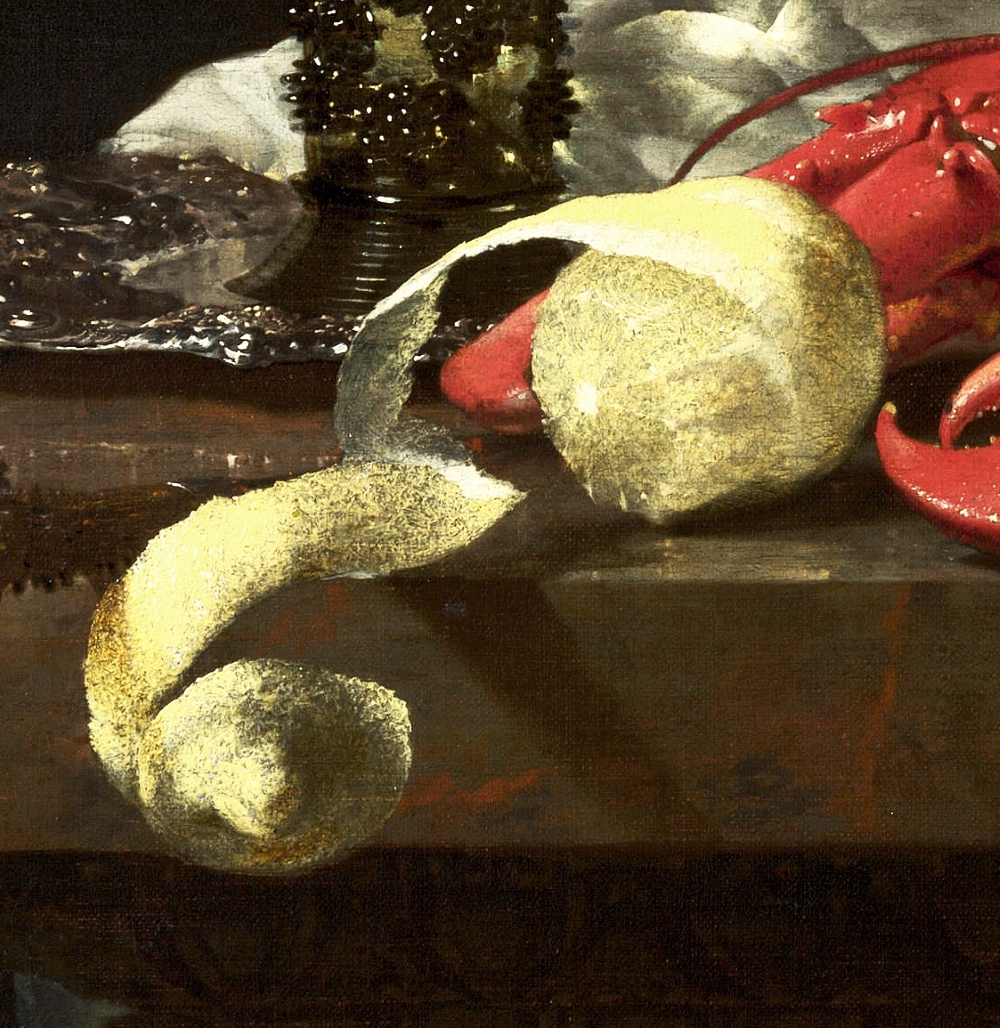Kalf's Lost Lemon

Oil on canvas, 34 x 40 inches, 1653
For a moment, it was heart-breaking.
I could tell that the ghostly lemon had once been a wonder – perfectly shaped, no doubt with vibrant color and exquisite detail.
Yet, it was almost as if somebody had taken a rag and smeared it right off the canvas.
As I looked around, I realized that nearly every painting in that part of the museum was somehow damaged as well, and I suddenly felt like I was visiting an archeological ruin, rather than a clean antiseptic museum.
In a way, that’s what old paintings are – ruins.
A few weeks ago, I shared my favorite painting with you – Willem Kalf’s “Still life with Drinking Horn, Lobster and Glasses”.
For a painting that is 368 years old, it is generally in excellent condition.
Except for that lemon.
Like buildings, paintings are complex structures – multiple composite layers bound together with mechanical and chemical forces.
Over time, they will begin to degrade and require maintenance. Just like with buildings, sometimes the maintenance goes wrong.
Kalf’s lemon was most likely lost during a botched cleaning.
Varnish protects and imperils
The varnishes that protect paintings were traditionally made from natural tree resins. After a few decades, they can begin to darken (modern synthetic resins appear to be more stable).
Once the varnish darkened to the point of obscuring the picture, it would need to be removed and replaced with a new layer of varnish.
However, the solvents that remove old varnish can also remove very thin layers of paint (glazes). While a skilled restorer can remove the varnish without damaging the paint layers beneath, an unskilled worker can mutilate a painting in minutes.
Kalf’s lemon was almost certainly painted with glazes, and at some point in the painting’s long life, it fell victim to a bad cleaning – literally, somebody took a rag and smeared it right off the canvas.
It’s always sad to see this – and sometimes it’s like a punch in the gut.
But I also remember that these wounds are part of the painting’s story as well – just like seeing the ruins of a great ancient building.
Unless they are new, paintings don’t come to us directly from the artist’s studio – they have years and sometimes centuries of lived experiences before we stand in front of them.
Sometimes, the scars of those experiences become every bit as much a part of the painting’s story as the brushstrokes the artist applied in the studio.
Even great works of art are not permanent – nothing is. Precious things are often vulnerable, and somehow their vulnerability makes them even more precious.
I finish between 1 and 4 paintings every month, and show them to my subscribers first.
To learn more, click the blue button directly below.